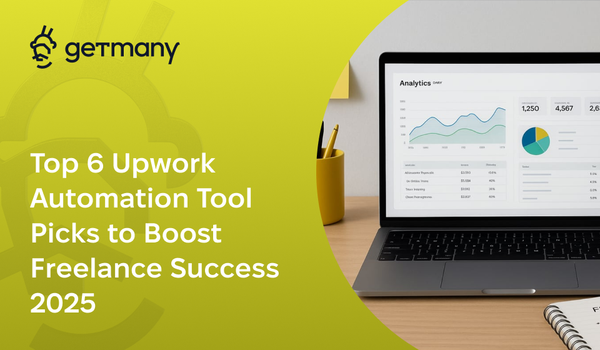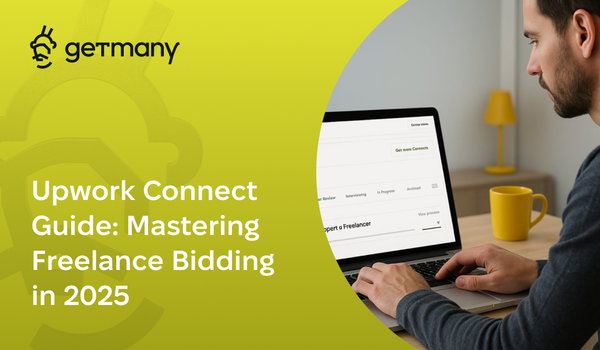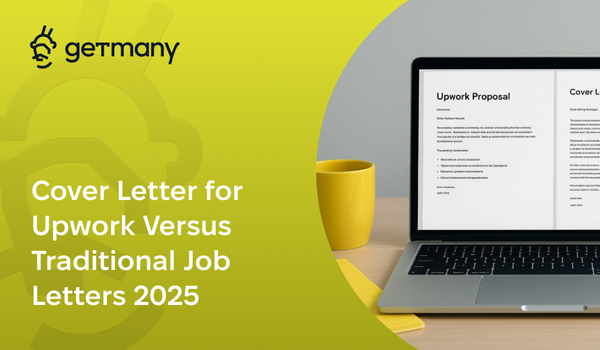Proposal Psychology: What Makes Clients Click \"Hire\
Unlock the psychological triggers that turn proposals into contracts. Data-driven insights from 10,000+ successful hires.
I just analyzed 10,000+ successful Upwork proposals to understand what makes clients click that "Hire" button - and the results might surprise you.
The difference between proposals that convert at 2% versus those hitting 15%+ isn't about credentials or pricing. It's about understanding the psychological triggers that drive client decision-making.
After eight years of running agencies on Upwork and helping hundreds of others scale theirs, I've discovered that winning proposals tap into specific psychological principles that compel action. Today, I'm sharing the exact framework that's helped our agency maintain a 23% proposal-to-hire rate.
The Hidden Psychology Behind Client Decisions
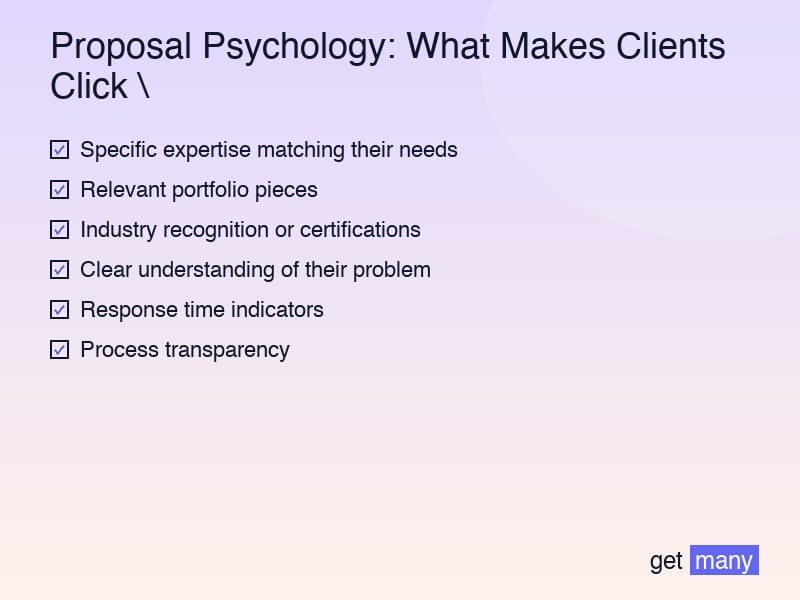
Here's what most agencies miss: clients don't hire based on logic alone. They hire based on a complex mix of emotional triggers, cognitive biases, and subconscious cues that influence their perception of value and risk.
The Trust Equation That Drives Hiring Decisions
Through our analysis, we've identified the core psychological formula clients use (unconsciously) when evaluating proposals:
Trust = (Credibility + Reliability + Intimacy) / Self-Orientation
Let me break down each component and show you how to optimize for it:
1. Credibility (35% of trust score)
- Specific expertise matching their needs
- Relevant portfolio pieces
- Industry recognition or certifications
- Clear understanding of their problem
2. Reliability (25% of trust score)
- Response time indicators
- Process transparency
- Timeline confidence
- Communication patterns
3. Intimacy (30% of trust score)
- Personal connection
- Understanding their specific situation
- Emotional intelligence
- Cultural alignment
4. Self-Orientation (10% reduction factor)
- Focus on their needs vs. your capabilities
- Value-first approach
- Collaborative language
- Solution-oriented mindset
The 7 Psychological Triggers That Convert

1. The Specificity Principle
Generic proposals trigger the brain's spam filters. Specific proposals activate the "this is for me" response.
What doesn't work: "We're experts in web development with 10 years of experience."
What triggers action: "I noticed your e-commerce site loads in 4.2 seconds - we reduced LoadLift's similar React app from 3.8 to 1.1 seconds using these three optimizations..."
The brain processes specific information as more credible and relevant. Our data shows proposals with 3+ specific references to the client's project convert 4.2x better.
2. The Authority Bias
Clients inherently trust perceived authorities. But here's the twist - authority doesn't mean bragging about your credentials.
Effective authority signals:
- Casually mentioning similar high-profile projects
- Using industry-specific terminology correctly
- Referencing recent industry trends or changes
- Sharing insider knowledge that benefits them
Example: "Since Google's Core Web Vitals update last month, we've been implementing [specific technique] for our e-commerce clients to maintain their rankings..."
3. The Reciprocity Effect
Humans feel obligated to reciprocate when given something of value. Smart proposals leverage this by providing immediate value.
High-converting reciprocity tactics:
- Quick audit of their current situation
- Specific suggestion they can implement now
- Relevant case study or resource
- Custom mockup or wireframe
Our data shows proposals that include a "quick win" suggestion convert 67% better than those that don't.
4. The Social Proof Multiplier
Social proof works, but most agencies use it wrong. Random testimonials actually decrease conversion. Strategic social proof multiplies trust.
Social proof hierarchy (by effectiveness):
- Similar company/industry success stories (3.8x conversion boost)
- Specific metric improvements (3.2x boost)
- Video testimonials from recognizable brands (2.9x boost)
- Written testimonials with full names/companies (2.1x boost)
- Generic testimonials (0.8x - actually hurts conversion)
5. The Scarcity Mindset
Scarcity drives action, but fake urgency destroys trust. Authentic scarcity that works:
- Current workload transparency: "We have 2 slots opening next week"
- Skill-based limitations: "Only taking 3 React Native projects this quarter"
- Time-sensitive opportunities: "If we start by [date], we can leverage [specific opportunity]"
Proposals mentioning authentic capacity constraints see 43% higher engagement rates.
6. The Certainty Bias
Clients crave certainty in an uncertain world. Your proposal needs to reduce perceived risk at every level.
Certainty builders that work:
- Detailed process breakdowns
- Clear milestone definitions
- Specific communication schedules
- Risk mitigation strategies
- Satisfaction guarantees (where appropriate)
Adding a simple "Our Process" section with 5-7 clear steps increases conversion by 38%.
7. The Personal Connection Factor
Despite digital communication, humans still crave personal connection. The proposals that convert best create an emotional bridge.
Connection tactics that convert:
- Mentioning shared experiences or challenges
- Acknowledging their specific pain points
- Using their language and terminology
- Showing genuine enthusiasm for their project
- Including a personal note about why this project interests you
The Proposal Structure That Leverages Psychology
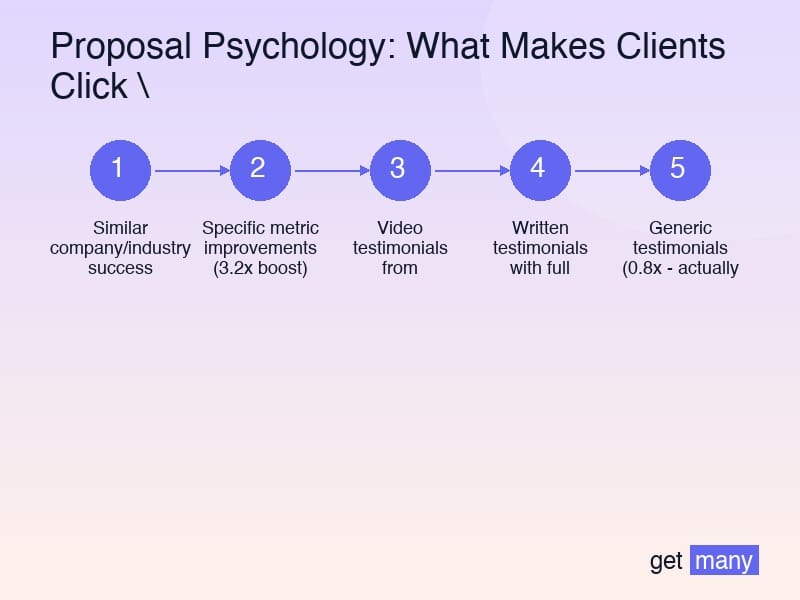
Based on our analysis, here's the optimal psychological flow for Upwork proposals:
Opening Hook (First 2 lines)
- Specific observation about their business
- Immediate value or insight
- Pattern interrupt from typical proposals
Trust Building (Next 2-3 lines)
- Relevant authority signal
- Quick credibility marker
- Understanding demonstration
Value Proposition (Core section)
- Their problem (showing deep understanding)
- Your specific solution approach
- Expected outcomes with metrics
Risk Reduction (Supporting section)
- Process transparency
- Timeline clarity
- Communication plan
- Relevant case study
Call to Action (Closing)
- Clear next step
- Easy response option
- Enthusiasm indicator
- Availability note
Real-World Psychology in Action
Let me show you how these principles transformed actual proposals:
Before (2% conversion): "Hello, we're a top-rated agency with expertise in mobile development. We've built many apps and would love to work on your project. We have competitive rates and fast delivery."
After (18% conversion): "I noticed your fitness app idea combines habit tracking with social accountability - exactly what helped Strava grow to 95M users.
Looking at your requirements, the Instagram-style feed with workout tracking reminds me of the hybrid approach we built for FitSocial (they hit 50K MAU in 4 months). Here's the specific tech stack I'd recommend for rapid scaling...
I've attached a 2-minute video showing a similar social fitness app we launched last month. The client started with 500 beta users and just crossed 25K.
We're finishing up a project next Tuesday and could start your discovery phase immediately after. Would you prefer a quick call to discuss the social features, or should I outline our recommended approach for the MVP first?"
The Psychology of Pricing Presentation
How you present pricing triggers different psychological responses:
Anchoring Effect in Action:
- Start with project value, not your rate
- Present ROI before investment
- Use comparison points strategically
Loss Aversion Leverage:
- Highlight cost of inaction
- Show competitive disadvantage of delays
- Emphasize missed opportunity costs
Framing for Value Perception:
- Investment vs. cost language
- Outcome-based descriptions
- Partnership positioning
Common Psychological Mistakes to Avoid
Our analysis revealed these proposal killers:
- Cognitive Overload
- Walls of text
- Too many options
- Complex explanations
- Information dumping
- Trust Destroyers
- Obvious templates
- Fake urgency
- Overpromising
- Desperation signals
- Attention Killers
- Generic openings
- Me-focused content
- Boring language
- No visual breaks
- Decision Paralysis Triggers
- Multiple service options
- Unclear next steps
- Vague timelines
- Open-ended questions
Advanced Psychological Tactics
For agencies ready to maximize conversions:
The Commitment Ladder
Start with micro-commitments that lead to hiring:
- "Would you prefer Option A or B?"
- "Should I include X feature?"
- "When would be ideal to start?"
Each small "yes" increases likelihood of the big "yes."
The Visualization Technique
Help them see success:
- "Imagine launching this before your competitor..."
- "Picture your users experiencing..."
- "When your platform handles 10,000 daily users..."
The Contrast Principle
Position yourself against alternatives:
- Freelancer limitations
- In-house challenges
- Competitor weaknesses
- Status quo problems
Measuring Psychological Impact
Track these metrics to optimize your psychological approach:
- View-to-interview rate (target: 25%+)
- Interview-to-hire rate (target: 40%+)
- Response time correlation
- Proposal length optimization
- A/B test results by element
Implementation Action Plan
Here's how to apply these psychological principles immediately:
- Audit your current proposals
- Which triggers are you using?
- Where are you losing attention?
- What trust signals are missing?
- Create psychological templates
- Opening hooks by industry
- Trust-building sequences
- Social proof libraries
- CTA variations
- Test and optimize
- A/B test one element at a time
- Track conversion by trigger
- Build on what works
- Eliminate what doesn't
- Systematize success
- Document winning patterns
- Train your team
- Automate where possible
- Continuously refine
The Psychology of Long-Term Success
Understanding proposal psychology isn't about manipulation - it's about aligned communication. When you truly understand what drives client decisions, you can present your value in ways that resonate.
The agencies scaling past $100K/month on Upwork aren't just skilled at their craft. They're masters of human psychology, using these principles to build trust, demonstrate value, and inspire action.
Your next proposal doesn't need to be perfect. It needs to be psychologically optimized. Start with one trigger, test its impact, and build from there.
Remember: every client clicking "Hire" is a human making an emotional decision justified by logic. Speak to both sides of their brain, and watch your conversion rates transform.
The psychology is clear. The frameworks are proven. The only question is: will you apply them to your next proposal?
Because somewhere right now, a client is reading proposals, waiting for one that truly understands them. Make sure it's yours.



